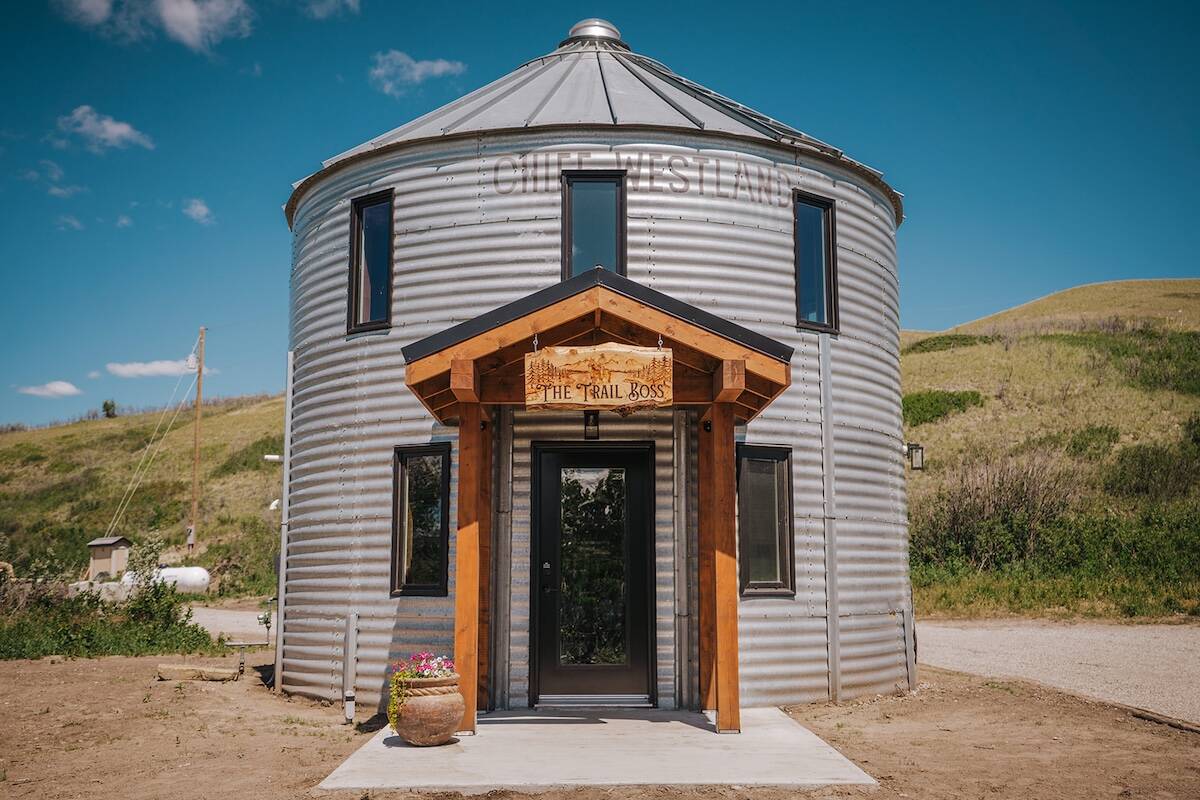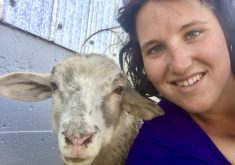Persistence is the key ingredient if you want to get your farm product into grocery stores, say Lisa and Troy Greenstein.
“I’m like a dog with a bone — if I get an idea in my head, I don’t let it drop until we get there,” said Lisa.
“Two and a half years ago, I said that in five years Greenstein Farms is going to be a household name and my father-in-law laughed at me. I said, ‘OK, I’ll do it in two.’
Read Also

A great idea for repurposing grain bins
The Morrison family of southern Alberta have transformed old grain bins into unique guest cabins.
“Within a year and a half, we had our contract with Save-On-Foods. So I’m a little bit tenacious.”
The couple and their five children moved to a farm near Daysland four years ago, keeping their day jobs and doing some hobby farming on the side, raising pigs, sheep, cows, chickens and ducks. They now have a 300-ewe flock and also buy lambs from other producers. It took months of phone calls and emails before getting a contract with Save-On-Foods.
“If one person says no to you, you go to the next one,” Lisa said at a recent Farm Direct marketing session hosted by Alberta Agriculture.
“Go online, find the customer service numbers for the companies you want to talk to. Talk to different departments and get the one you’re looking for. Email, email, email.”
From the Manitoba Co-operator website: Lamb co-op ready for spring launch
Details critical
But getting the contract — which arrived just as Lisa discovered she was expecting — was just the start.
“The next seven months were absolute chaos for us,” she said. “Ryder was born just as we were hitting a huge learning curve.”
 The couple hadn’t realized selling to a chain meant having their lambs processed at a federally inspected plant. That meant convincing their competitor, SunGold Meats in Innisfail, to inspect their meat.
The couple hadn’t realized selling to a chain meant having their lambs processed at a federally inspected plant. That meant convincing their competitor, SunGold Meats in Innisfail, to inspect their meat.
Labelling, which must meet Canadian Food Inspection Agency guidelines, was another confusing prospect.
“It’s up to you, the producer, to have it all correct,” said Lisa. “There’s a terrible fear that if you miss something, all of your product will be sent back to you.”
Once again, she worked the phone, constantly questioning CFIA officials.
“Even if it may seem like a stupid question, it could save you thousands,” she said. “I can personally tell you what it’s like to have the bottom of your stomach fall out when you’ve OK’d your label, sent it to the printers, and you have 10,000 labels ready to be printed and you realize the designer forgot the French on it.”
Fortunately, that glitch was caught in time, but her advice is “be prepared for those challenges.”
Transportation was another issue.
“Here’s where we found out that health codes and safety standards become a little convoluted,” she said.
Even though the Greensteins’ freezers were certified by Alberta Health Services, their trailers didn’t meet SunGold’s requirements. So the couple had to hire a storage facility that would pick up their product, and hold it until SunGold could pick it up.
The couple took an unusual path to connect with other producers and find lamb suppliers — they began selling sheep-handling equipment.
“We’ve met so many wonderful and interesting people through our sales and we now have a huge network of producers all across Alberta,” she said.
“Ideally, we’d like to see Greenstein Farms become a co-op run by local lamb producers in Alberta, where everyone can benefit, including the consumer.”
The couple still have their day jobs and even though a seventh child is on the way, they continue to build their farm business (www.greensteinfarms.com). They direct sell a host of products — beef, pork, chicken, lamb, raw dog food, lamb sausages, Great Pyrenees puppies, raw wool, and variety boxes with different cuts of meat as well as produce.
Social media has been a key marketing tool. Twitter helped them get their product into restaurants and bring them closer to consumers who buy their products.
“One of the most important aspects that I’ve found in sales is creating an emotion in your customer and attaching that emotion to your branding is a necessary step,” she said.
This is especially important if you want a premium price.
“Customers need a reason to spend that extra money,” said Lisa. “They need to feel an emotional connection not only to your product, but to you as the supplier or producer.”
















